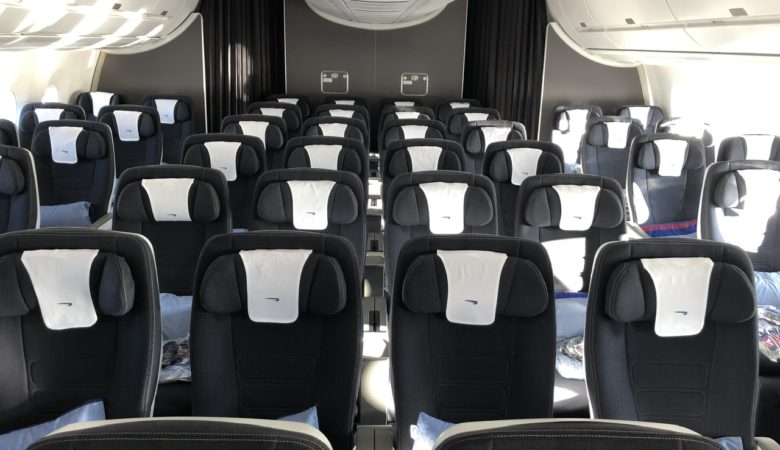If you’ve ever booked a flight and noticed a single letter next to your fare type – like Y, M, or Q – you might have wondered what it all means. The airline fare class code can be a bit of a mystery, but they’re actually quite important. They determine not just where you sit, but also how flexible your ticket is, your chances of getting an upgrade, and how many frequent flyer and status points you’ll earn. Let’s take a closer look at these fare classes and use some well-known airlines to show you what these letters mean for your travel experience.
Economy Class: More Than Just One Option

When you think of Economy Class, you might assume that everyone sitting in the back of the plane is on the same type of ticket. But in reality, there are often several different fare classes within Economy, each with its own set of rules and benefits.
Example: British Airways
- Y Class: This is usually the highest fare class within Economy. It often comes with the most flexibility—meaning you can change or cancel your ticket with fewer fees—and can earn you more frequent flyer points. On British Airways, a Y class ticket might earn 100% of the flown miles in points.
- M, H, Q Classes: These are still Economy tickets but with slightly less flexibility. Changes or cancellations might come with a fee, and they might earn fewer points. For example, a Q class ticket might earn 50-75% of the miles flown.
- O, G Classes: These are typically the lowest fare classes in Economy, often linked to sale fares. They’re the least flexible—you might not be able to change or cancel at all without losing the fare—and they earn the fewest points, sometimes as low as 25% of miles flown. Upgrades are usually a no-go with these tickets, so don’t count on moving up to Premium Economy or Business.
Before booking your BA ticket, be sure to check the fare class code you’re being sold against BA’s points earning chart.
Business Class: Not All Seats Are Equal
You might think that a Business Class ticket is always the same luxurious experience, but even here, the fare class matters.

Example: Emirates
- J Class: This is usually a fully flexible Business Class fare, offering the highest level of service and the most points. You can often change your flight plans without much hassle, and you’ll have a good chance of getting an upgrade to First Class if available.
- C, D Classes: These are still Business Class, but with a bit more restriction. You can change your ticket, but fees might apply, and points earning could be slightly reduced. Upgrade chances are still decent, but not as high as with J class.
- I Class: This is often a discounted or promotional Business Class fare. It’s less flexible—change fees are higher, and cancellations might be restricted. Points earning can be lower, and upgrades are less likely.
Some airlines have even removed lounge access and baggage on the very lowest business class fares, so double-check the fare class before you book.
You can check the fare class code you’re being sold against Emirates’ points earning calculator.
Premium Economy: A Middle Ground with Its Own Nuances
Premium Economy is a newer cabin type that sits between Economy and Business, offering more space and comfort without the high price tag of Business Class. But even here, the fare class can make a big difference.

Example: Singapore Airlines
- S Class: A fully flexible Premium Economy ticket. You can change or cancel with fewer restrictions, and you’ll earn a decent amount of points. Upgrades to Business Class are possible, though not guaranteed.
- T Class: A less flexible Premium Economy fare. Change fees are higher, cancellations might not be allowed, and points earning is reduced. Upgrades are less common with these tickets.
First Class: The Pinnacle, with Conditions
While First Class offers the ultimate flying experience, the fare class still matters, especially if you’re flying on a budget or using points. At this level, you’re less worried about upgrades and more interested in the flexibility and points your ticket delivers.

Example: Lufthansa
- F Class: A fully flexible, full-fare First Class ticket. Changes and cancellations are easy, and you’ll earn the maximum number of points. Upgrade options are also at their peak, though in First Class, you’re usually already at the top!
- A Class: A discounted First Class fare. These tickets offer less flexibility and fewer points. If there are promotional upgrades, A class tickets might not qualify, as they’re already discounted.
How to Find and Understand Your Fare Codes
One thing to keep in mind is that airline fare class codes aren’t always displayed prominently during the booking process. They can be quite tricky to find, often buried deep in the booking details or completely absent until after you’ve purchased your ticket. This can be confusing, especially since fare classes can vary between flights in a single itinerary, meaning you might end up with different levels of flexibility or points earning on each leg of your trip. To view fare codes, you can usually check the booking details on the airline’s website after selecting your flights or use a third-party tool like ExpertFlyer that displays fare class information. If you’re buying your ticket through a travel agent or over the phone, don’t hesitate to ask the human handling your booking to specify the airline fare class code for each flight in your itinerary. Knowing these details in advance can help you avoid surprises and ensure you’re getting the best value for your money.
BG1 Verdict: Know What You’re Buying
Understanding your airline fare class code can help you make a more informed choice when booking your next flight. Whether you’re after flexibility, more frequent flyer or status points, or just the best chance of an upgrade, knowing the difference between a Y and an O class, or a J and an I class, can make all the difference. If you’re flying to build frequent flyer status, some fare classes might result in significantly reduced or even zero tier points! So next time you book, take a closer look at those little letters – they’ve got a lot to say about your journey ahead.





Leave a Reply